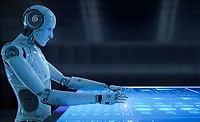Why You Can’t Afford to Ignore Video Analytics
In this age of heightened security, the sheer quantity of video needing to be monitored from cameras observing sensitive locations can be a daunting challenge for security professionals at all levels. Added to this task is the expense and potential fallibility of dedicated personnel hired to scrutinize video displays for extended periods of time. Fortunately, automated video analysis using computer intelligence to detect crucial details that might elude human observers is now a built-in feature in many modern megapixel IP security cameras.
These video analytics can be as simple as the capability ofsome pan-tilt-zoom models to automatically identify and track motion within a scene (based on user-adjustable settings) to more advanced features that make the camera, in effect, a “partner” in detecting anomalous events. Such“intelligent features” literally enable IP security cameras to comply with the oft-heard phrase, “If you see something, say something.” Video analytics today can include the detection of abandoned, moving, or removed objects in an image, combined with the triggering of an alert signal when such events occur. Examples of situations where such video analytics can be helpful include detecting abandoned briefcases or backpacks in public areas (such as airports or other transportation centers), movement in areas where there shouldn’t be any (such as in a retail store at night), or the absence of an object that should ordinarily be in a picture (such as an artwork in a museum). Video analytics can be user-adjustable in terms of detection area (automatically highlighted for instant visual identification), sensitivity, and duration. Video analytics also gives users the option to economize on video archiving, since it differentiates between “important” video segments from those that are not.
Reinforcing video analytics are camera analytics, which can include the detection of abnormal noises in the camera’s immediate vicinity, ranging from the sound of gunshots to someone tampering with the camera or physically abusing it. Physical disturbances to the camera and its protective dome can also trigger alerts. Additional video analytics can be provided by computer-based recording hardware programmed to recognize faces, shapes, objects, and other user-determined details.
Mindful of privacy concerns, some manufacturers of IP video cameras offer users the ability to create a privacy mask to block the view of sensitive locations, such as residential doors and windows, ATM keypads, or computer monitors. User-settable, privacy masks are especially convenient for large installations of IP video security cameras in urban areas, where there may be a mix of commercial properties needing scrutiny and private residences that do not.
IP security cameras capable of simultaneously outputting H.264 and Motion-JPEG enable users to access the benefits of video analytics from any location, whether that’s a full megapixel feed viewed at a central monitoring location or a more compressed stream of the same video on a password-accessed smart phone.
Clearly, any innovation that increases the information value of security video is likely to benefit the ROI in monitoring personnel and equipment, as well as improve a security organization’s efficiency and overall bottom line.
Looking for a reprint of this article?
From high-res PDFs to custom plaques, order your copy today!








